History and Issues in Special Education
Lecture 1: Notes
KEY CONCEPTS IN SPECIAL EDUCATION
SPECIAL EDUCATION
Direct instructional activities or special learning experiences designed primarily for students identified as having certain disabling exceptionalities in one or more aspects of the cognitive process or as being underachievers in relation to general level or model of their overall abilities.
– special designed instruction, that meets the unusual needs of exceptional children it includes special materials like large prints for people with low vision/ vision problem, different teaching techniques like sign language, special equipment and facilities like Perkins Braille.
Exceptional Children and youth: Are those who deviate from the normal patterns of development, either by higher than average or lower than average performance or ability. They differ to an extent that they require special education to meet their need. The deviation can be physical, psychological, social or intellectual.
Categories of exceptional children
(a) Intellectual exceptionality: This includes the gifted, talented and they differ above the norm, on lower side there are children with mental retardation (IQ of 75 and below).
Note: gifted have high intellectual ability while talented have one area of intellectual
(b) Physical and health impairment: This include those children whose non sensory, physical limitations, health problems interferes school attendance or learning so they need special services, training, equipment, materials or facilities. For example those with neurological impairment (cerebral palsy, seizures), congenital malformations, musculoskeletal and other physical conditions.
(c) Sensory deviation: That is sensory disabilities like hearing and seeing (visual) which are mostly use in education situation, and others like smell which is more needed in science subjects, taste in cookery.
(d) Learning disability: This is the difference between persons/children potentials and performance. For example performance can be high and potential is very low.
Children with Learning Disability (1) are of normal intelligence (2) have difficulty in at least one academic area (listen, read, write, concentrate etc.) (3) have no other diagnosed problem or disorder such as mental retardation.
(e) Speech and Language exceptionalities: It is considered a disorder it interferes communication i.e. lead to communication breakdown and cause the speaker and listener to be distressed. Include a number of speech problems (such as articulation disorders, voice disorders & fluency disorders) and Language problems (difficulties in receiving information and expressing language).
(f) behaviourally and emotionally disturbed,
DISABILITY
Is reduced function or loss of a particular body part or organ which limits the ability of a person to perform a certain task e.g. reduced function to see, hear, walk etc. Disability means the same as impairment.
HANDICAP
This means problems which a person with disabilities encounters when interact with the environment. So you can have a disability without having handicap e.g. problem with lower limbs cannot affect writing; children who use wheelchair do not adequate access to a bathroom, transportation etc
Handicap condition is imposed on a person who has a disability by society, the physical environment, or the person’s own attitudes.
Educators increasingly speak of “children with disabilities” rather than “disabled children” to emphasise the person, not the disability.
Refer to children/person who are not currently identified to have disability but who are considered to have greater than usual chance of having disability e.g. children born by mothers who uses drugs are considered to be at risk of being good users of drugs in their development.
DEFECT
Is an imperfection, lack of something which is imperative.
REHABILITATION
Refer to social service/program to teach a newly handicap person basic skills
INTERVENTION
Reduction or removal of the risk factor, i.e. must reduce the risk of the outcome. Refers to all efforts on behalf of individual with disabilities. The overall goal of intervention is to eliminate, or at least reduce, the obstacles that might keep a child or adult with disabilities from full and active participation in school and society.
INCLUSIVE EDUCATION is a system of education in which all children, youths and adults are enrolled, actively participate and achieve in regular schools and other educational programmes regardless of their diverse backgrounds and abilities, without discrimination, through minimisation of barriers and maximisation of resources.
3 TYPES OF INTERVENTION
(a). Preventive i.e. keeping the possible problems from becoming serious handicap
(b). Remedial: here the problem has already occurs, so you provide a programme to overcome a handicap through training and education.
(c). Compensatory: Means a person has disability need programme to assist cope with environment e.g. VI person need to be taught compensatory by using/reading Braille i.e. give them new ways of dealing with disability
Lecture 2: Notes
HISTORICAL DEVELOPMENT OF SPECIAL EDUCATION
(ATTITUDE TOWARDS PEOPLE WITH DISABILITY)
1ST PHASE: ERA BEFORE CHRISTIANITY
During this time people with disability were neglected, abused, killed because they were not productive, therefore they are not valued.
2ND PHASE: CHRISTIANITY ERA
As time went there was change in attitude and society become more protective i.e. people started to realize that these people are created by GOD and they shouldn’t be killed. So they decided to put them in “Asylum” (refuge) and given food and shelter. The institutions were built far from the residential areas; children/people with all impairment were combined, so the condition was bad. But no type of education was provided to them.
3RD PHASE: ERA OF SEPARATE EDUCATION
At this time there was some sort of acceptance. Therefore certain institutions were separated fore different categories of disability.
4TH PHASE: ERA OF INTEGRATION OR MAINSTREAMING/ INCLUSIVE
Era of total acceptance, normalization of services provided, they are put in regular classes with the same mainstream of the society. There was all continuum of services.
HISTORICAL DEVELOPMENT OF SPECIAL NEEDS EDUCATION (SNE) IN TANZANIA
In Tanzania we do not have any written records concerning people with disability. However, there is oral history which indicates that there was negative attitude toward disabled. In 1978 infanticide was practiced in some of the societies.
Tanzania as a member of the International Community has signed and ratified various UN Conventions and has several declarations of services to people with disabilities e.g.
- 1952 the 1st publication of UN in rehabilitation as basis for establishment of services
- 1971 – declaration on rights of mental retarded persons
- 1975 – declaration on rights of disabled persons
- 1976 – the proclamation(declaration) that 1981 was going to be international year of disabled persons in France
- 1974- Universal Primary Education (UPE) –which emphasized the right of all Tanzanian children to a free primary education
- Education Act of 1978 i.e. every child of school going should be provided with education. The Education Act (1978) statutes a compulsory schooling and regular attendance at primary level of education. The Education Act (1978) statutes a compulsory schooling and regular attendance at primary level of education.
- The Education and Training Policy (1995) endorsed the right to pre-primary and primary education and adult literacy to all citizens as a basic right. – access to education to disadvantaged social and cultural groups.
- The Child Development Policy (1996) aims at protecting children’s rights as expressed in the UN Convention on the Rights of the Child. The policy recognises that measures need to be taken to ensure that all children of school going age are enrolled.
- The National Policy on Disability (2004) urges the Government, in collaboration with stakeholders, to provide a conducive environment for inclusive education which would take care of the special needs of children with disabilities.
- Tanzania has ratified the UN Convention on the Rights of the Child (1989) which outlines the right to education and training of all children
- UNESCO Salamanca Statement and Framework for Action (1994) reinforces the obligation for schools to accommodate all children regardless of their physical, intellectual, social, emotional, linguistic or other conditions.
- The Dakar World Education Conference (2000) recalled in the notes on the Dakar Framework for Action that “…the inclusion of children with various educationally disadvantaged positions…”
- Article 24 of the UN Convention on the Rights of Persons with Disabilities (2006) urges the Member States to organise education for persons with disabilities without discrimination and on the basis of equal opportunity.
- The National Strategy for Growth and Reduction of Poverty (NSGRP, or MKUKUTA) identifies disability and children among the crosscutting issues.
- 1997 Tanzania started implementing Inclusive Education and became a national agenda resulting to formation of National Strategy on Inclusive Education (2009 – 2017) in 2008. The main is to have a systemic change from segregated and integrated schools to inclusive education.
The establishment of institutions providing services
Many institutions were established by religious organizations for example
- 1950s the Anglican Church (the 1st one) established a primary school by the name of Wilson Carlile for blind boys in Buigiri, Dodoma.
- 2nd school was established in 1960 as Mpwapwa sec. school, established and managed by the government and it was only for boys.
- In 1962 Swedish Free Blind School “Furaha School” established in Tabora- Primary level – special residential school for girls but in 1964 it became co-education.
- 1963 – Irente school for blind girls in Lushoto was established by Lutheran, it became co-education in 1972, it was residential.
- 1966 – Uhuru co-education in Dar es salaam i.e. unit with other students. It was established by government with help of voluntary services.
ESTABLISHMENT OF SCHOOLS FOR DEAF
- The first school was established in 1963 i.e. Tabora deaf mute Institute – Primary school level, established by Roman Catholic church, it was special residential school for both boys and girls.
- 1974 – Dar es salaam Primary school level was established by Tanzania society for deaf i.e. it has day and boarding school, it follows regular curriculum and auditory training.
- 1981 – Bukoba school for deaf and Mwanga school for the deaf was established by Lutheran church and was special residential for both boys and girls.
- 1967 – The salvation army established school for children with physical disability i.e. Mgulani Primary school
- The first government school in the field of special needs education was established in 1982. The school provided services for children with mental retardation. Intellectual Impairment (Mentally Handicapped Children) – Sinza Maalum.
- Limited services for children with autism and deaf-blindness were established in 1984s.
The historical development of special needs education in Tanzania follows the development in most other countries: services for certain disability groups (the blind and the deaf) provided by churches and charity organizations are the first to develop, followed by small-scale educational provisions in special schools for other disability groups (e.g. persons with physical and intellectual disabilities).
Lecture 3: Notes -Ableism
Ableism
Ableism is a form of discrimination or prejudice against people with disabilities.
The ableist societal world-view is that the able-bodied are the norm in society, and that people who have disabilities must either strive to become that norm or should keep their distance from able-bodied people. A disability is thus, inherently, a bad thing that must be overcome.
The ableist worldview holds that disability is an error, a mistake, or a failing, rather than a simple consequence of human diversity, akin to race, gender, or sexual orientation.
Some examples everyday life ableism:
- Lack of infrastructure in public facilities (wheelchair ramps/lifts/bridges)
- The use of potentially or historically offensive terms to refer to a disability.
- The refusal to hire individuals based on their disability, unless the refusal is justifiable on the grounds of workplace safety or productivity. In most cases the workplace is wheelchair inaccessible including washrooms
- The refusal to provide basic services to an individual because of their disability.
- The refusal to allow for the access of service animals into a facility (guide dogs, hearing dogs, et cetera).
- denying persons decision making capabilities in their own lives (e.g. forced sterilization, decision making in terms of housing, etc)
- refusing to give the level of respect due to a person,
Ways to Avoid Everyday Ableism
1. Don’t Use Handicapped Restrooms
Accessible restrooms are adapted for a reason, not just for the luxury of added space or privacy.
2. Don’t assume that disability is inability
3. Don’t Address people with disability through an Able-Bodied Person
For example John is physically impaired; and because of this impairment, he’s perceived socially as a small child incapable of processing direct speech. As a result on different occasions people ask her mom if he’s able to speak while he’s right next to her and clearly listening.
4. Don’t Ask ‘What Happened’
People with disabilities are often subjected to many and continuous questions, people frequently ask them for the truth or origin story of their condition. Disability is usually (and misguidedly) associated with a moment of trauma, like an accident.
5. Make Sure All Venues Are Accessible
If they’re not, think about how they can be modified, or prepare an alternative path.
6. Legislation can help break down barriers
so advocate for good legislation preventing
7. Language matters:
Excising ableist language can help make safe space for disabled people. Any time you use a word like retard or lame to mean “terrible,” you’re reinforcing that connection. Avoid phrases like “crippled by debt,” “blind to the consequences,” etc.
8. Remember: People with Disabilities Are People First
Call them “person with a disability” rather than “disabled person. It’s always important to consider an individual’s personhood instead of the circumstances that define them. Everyone deserves to be treated with respect. It sounds cliché, but don’t judge a book by its cover.
Institutional Ableism
Institutional ableism is referred to discrimination towards disabled children, teachers and other people in an institution. Children with special needs or who are disabled face many problems in maintaining interpersonal relationships at schools.
Parents with special children need to know that their child may become victim of ableism. Many students, school officials and even teachers treat special children differently. Parents should know when their disabled children are at risk of negative stereotyping.
Institutional Ableism Examples
| Institution | Intentional | Unintentional |
| Education | – Children with Disabilities segregated from other students in classes | – Class trips are planned without checking to see if places to visit are accessible for students with disabilities |
| – Classrooms do not have assistive technology for learning | – Staff development programs do not include information about universal instructional design |
|
| – A town votes down a proposal to fund additional classroom aides or tutors for students with disabilities | – Students with disabilities are not part of curriculum materials – books,
videos. etc. |
|
| Health Care | – Funding for Medicare resources for people with disabilities is cu | – Opposition to universal health care places people with disabilities at risk of losing health care benefits |
| – Managed care decisions made by insurance companies limit resources for people with disabilities to cut costs | – Lack of health care insurance places people with disabilities at increased risk of death and poor health | |
| – Decisions about right to die based on belief that living with a disability is
“fate worse than death.” |
||
| – A medicalized view of people with disabilities invalidates their ability to control their lives | ||
| Government | – Lack of accessibility or assistive technology enabling people with disabilities to participate in local government meetings, committees | – Focus on privatizing services based on for-profit jeopardizes support for programs for people with disabilities |
| – Cutting funds for programs that benefit people with disabilities | ||
| – Sponsoring charity events, but not supporting independent living programs | ||
| Media | – Use of “normal,” “beautiful” people in
Advertising |
– Absence of people with disabilities portrayed in movies, TV |
| – Lack of books on tape or in Braille, use of subtitles on videos | – Focus on disability as tragedy to be overcome | |
| – Focus on people with psychiatric disabilities as serial killers, murderers | ||
| Sports | – Assumption that person with a physical disability should not compete with “normal” athletes –
unfair competition (PGA disallowing golfer who needs to use a golf cart) |
– Assumptions that able-bodied athletes are superior to disabled athletes
(Olympics and Paralympics) |
| – Sport drug rules that exclude people with disabilities (asthma medications) |
© Teaching for Diversity and Social Justice, Second Edition, Routledge, 2007
LECTURE 4
Notes – Types of Learning Differences
Specific Learning Differences (SpLDs)
Dyslexia
Dyslexia is a combination of abilities and difficulties; the difficulties affect the learning process in aspects of literacy and sometimes numeracy. Getting through required reading is generally seen as the biggest challenge at higher education level due in part to inability to skim and scan written material.
Marked and persistent weaknesses may be identified in short-term and working memory, speed of processing, sequencing skills, auditory and /or visual perception, spoken language and motor skills.
Abilities can include good visuo-spatial skills, creative thinking and intuitive understanding; enabling technology is usually found to be very beneficial.
Dysgraphia
A specific learning disability that affects a person’s handwriting ability and fine motor skills. Problems may include illegible handwriting, inconsistent spacing, poor spatial planning on paper, poor spelling, and difficulty composing writing as well as thinking and writing at the same time.
Dyspraxia
Students with dyspraxia are affected by an impairment or immaturity of the organisation of movement, often appearing clumsy. Gross and fine motor skills (related to balance and co-ordination) and fine motor skills (relating to manipulation of objects) are hard to learn and difficult to retain and generalise. Writing is particularly laborious and keyboard skills difficult to acquire.
Pronunciation may also be affected and people with dyspraxia may be over/under sensitive to noise, light and touch. They may have poor awareness of body position and misread social cues in addition to those shared characteristics common to many SpLDs.
Dyscalculia
Dyscalculia is a learning difficulty involving the most basic aspect of arithmetical skills. The difficulty lies in the reception, comprehension, or production of quantitative and spatial information.
Students with dyscalculia may have difficulty in understanding simple number concepts, lack an intuitive grasp of numbers and have problems learning number facts and procedures.
These can relate to basic concepts such as telling the time, calculating prices and handling change and estimating and measuring such things as temperature and speed.
Attention Deficit (Hyperactivity) Disorder
Attention Deficit Disorder (ADD) exists with or without hyperactivity. In most cases people with this disorder are often off task, have particular difficulty commencing and switching tasks together with a very short attention span and high levels of distractibility. They may fail to make effective use of the feedback they receive and have weak listening skills.
Those with hyperactivity may act impulsively and erratically, have difficulty foreseeing outcomes, fail to plan ahead and be noticeably restless and fidgety. Those without the hyperactive trait tend to daydream excessively, lose track of what they are doing and fail to engage in their studies unless they are highly motivated.
The behaviour of people with AD(H)D can be inappropriate and unpredictable; this, together with the characteristics common to many SpLDs can present a further barrier to learning.
How do these SpLDs affect learning?
The following are recognised as characteristic effects of dyslexia and other specific learning difficulties on the learning process. The range of characteristics will differ from person to person.
- Lack of confidence.
- Difficulty in becoming fluent in a new skill to the point where it becomes automatic, for example reading, writing and driving a car.
- Taking longer to complete tasks than other students.
- Difficulties in organising work and other aspects of their lives.
- A poor sense of passage of time, mixing up dates, times and appointments.
- Poor short-term memory leading to difficulties in carrying out instructions or copying from the board and remembering what has just been read and/or said.
- Difficulties retrieving words when speaking and mispronunciations caused by difficulties in discriminating sounds or motor problems.
- Directional confusions, getting easily lost and having problems using maps or finding their way to a new place.
- Poor motor control resulting in a range of difficulties including controlling a pen leading to untidy handwriting with many crossings out.
- Errors when reading and spelling such as confusion or omission of sounds and/or muddling words.
- Difficulties in retaining the visual image of words, signs, symbols and formulae.
- Difficulties in reading text caused by visual distortions such as blurring or moving letters.
- Difficulties in comprehension despite appearing to read fluently.
- Difficulties in sequencing letters in spelling, or numbers and signs in maths, difficulties taking messages, remembering phone numbers and dialling them accurately.
- Problems with sequencing such as instructions and mathematical procedures, sequencing of numbers or letters and difficulties using dictionaries, encyclopedias and directories.
- A short attention span and poor concentration.
- Particular susceptibility to stress which may be associated with deadlines or examinations.
- Noticeable inconsistency between what can be achieved on a “good” and “bad” day.
(Source: DfES Specific Learning Difficulties Working Group (July, 2004)
NEXT CONTENT ASA LECTURE 5
CHILD ECOLOGY
The key concept of child ecology is the combination of two elements, social and biological. That is a child is born as a biological existence into a social system and socialized to function well in such a system.
A child grows and develops through interactive processes between his or her inborn programs and the environment, which is composed of micro-, mini-, meso- and macro-ecosystems. In these ecosystems, there are natural, physio-chemical, biological and sociocultural ecological factors.
ECOLOGICAL SYSTEMS
Urie Bronfenbrenner (1917-2005) developed the ecological systems theory. Bronfenbrenner believed that a person’s development was affected by everything in their surrounding environment. He labeled different aspects or levels of the environment that influence children’s development, including the:
- Microsystem
- Mesosystem
- Exosystem
- Macrosystem
- Chronosystem
The Microsystem
The microsystem is the system closest to the person and the one in which they have direct contact. Some examples would be home, school, daycare, or work. A microsystem typically includes family, peers, or caregivers.
How these people interact with the child will have an effect on how the child grows; the more encouraging and nurturing these relationships and places are, the better the child will be able to grow.
Furthermore, how a child acts or reacts to these people in the microsystem will affect how they treat her in return. Let’s look at the microsystem John lives in.
The first part of his microsystem is his home environment. This includes his interactions with his parents and little sister and brother. John’s school is also part of his microsystem. His regular school interactions are with his pre-primary class teacher and the other children in his class.
The Mesosystem
Bronfenbrenner’s next level, the mesosystem, describes how the different parts of a child’s microsystem work together for the sake of the child. For example, if a child’s caregivers take an active role in a child’s school, such as going to parent-teacher meetings and watching their child’s games, this will help ensure the child’s overall growth.
One aspect of John’s mesosystem would be the relationship between his parents and his teacher. His parents take an active role in his school, such as attending parent/teacher meetings and volunteering in his classroom.
This has a positive impact on his development because the different elements of his microsystem are working together. John’s development could be affected in a negative way if the different elements of his microsystem were working against one another.
The Exosystem
The exosystem level includes the other people and places that the child herself may not interact with often herself but that still have a large affect on her, such as parents’ workplaces, extended family members, the neighborhood, etc.
For example, if a child’s parent gets laid off from work, that may have negative effects on the child if parents are unable to pay rent or to buy foodstuff; however, if her parent receives a promotion and a raise at work, this may have a positive effect on the child because her parents will be better able to give required needs.
One part of Alex’s exosystem would be his father’s workplace. John’s father is a driver of big trucks. This often takes him away from the family, and John sometimes does not see his father for months at a time.
This situation impacts John, and he becomes anxious when his father leaves. John’s anxiety has an effect on his development in other areas, even though he has no interaction with his father’s work or say in the decision-making process.
The Macrosystem
Bronfenbrenner’s final level is the macrosystem, which is the largest and most remote set of people and things to a child but which still has a great influence over the child.
The macrosystem includes things such as the relative freedoms permitted by the national government, cultural values, the economy, wars, etc. These things can also affect a child either positively or negatively.
The Chronosystem
The chronosystem includes the transitions and shifts in one’s lifespan. The chronosystem demonstrates the influence of both change and constancy in the child’s environment.
The chronosystem may thus include a change in family structure, address, parent’s employment status, in addition to immense society changes such as economic cycles and wars.
Lecture 9: Notes
What is an Individual Education Plan (IEP)
An IEP is a written plan. It is a working document which describes the strengths and needs of an individual exceptional pupil, the special education program and services established to meet that pupil’s needs, and how the program and services will be delivered. It also describes the student’s progress. An IEP should be based on a thorough assessment of the student’s strengths, interests, and needs. It should identify specific goals and expectations for the student, and explain how the special education program will help the student achieve the goals and expectations set out in the plan. The special education program and services the IEP describes should be modified as necessary by the results of continuous assessment and evaluation.
An IEP is:
i. a summary of the student’s strengths, interests, needs, and of the expectations for a student’s learning
ii. a written plan of action prepared for a student who requires modifications of the regular school program or accommodations;
iii. a tool to help teachers monitor and communicate the student’s growth;
iv. a plan developed, implemented, and monitored by school staff;
v. a flexible, working document that can be adjusted as necessary;
vi. an accountability tool for the student, his or her parents, and everyone who has responsibilities under the plan for helping the student meet his or her goals and expectations;
An IEP is not:
- a description of everything that will be taught to the student;
- an educational program or set of expectations for all students;
- a means to monitor the effectiveness of teachers; or
- a daily plan.
Important information to be Included in an IEP
- Summary of student’s strengths and needs
- Relevant medical/health information
- Relevant formal assessment data
- Student’s current level of educational achievement in each area
- Goals and specific expectations for the student
- Accommodations required (supports or services that will help the student access the curriculum and demonstrate learning)
- Special education and related services provided to the student
- Assessment strategies for reviewing the student’s achievements and progress
- Regular updates, showing dates, results, and recommendations
- Transition plan (if required)
The IEP process involves the following five phases:
1. Gather information
2. Set the direction
3. Develop the IEP
4. Implement the IEP
5. Review and update the IEP
It should be noted that IEP process is continuous, involving ongoing review, evaluation, and adjustments.
1. Gather information
Review the student’s records ( like student’s academic achievements, attendance, school behaviour, communication skills, likes, dislikes, talents, problem-solving skills, social skills etc
- Consult with the student, parents, school staff, and other professionals (like counselors, social workers, resource teachers etc)
- Observe the student (how the student approaches new tasks;; interacts with others; organizes himself or herself, and materials; uses language; performs individually and in group activities etc.).
- Review the student’s current work
- Conduct further assessments, if necessary
- Consolidate and record information
2. Setting the Direction
- Establish a collaborative approach (including the student and parents). The membership of an IEP team can and should vary according to the needs of the individual student.
- Establish roles and responsibilities to team members (class teacher, special education teacher, parents, the student etc)
3. Developing an IEP
-
- Identify and record the student’s strengths and needs
- Identify goals and expectations
- Determine strategies and resources
- Develop a transition plan ( Some Special Need education pupils may experience difficulty making transitions from one grade level to another, from one school or school to another, therefore a detailed and coordinated transition plan, implemented well before the anticipated move, will help prepare these students and assist them in making a smoother transition.
- Establish a monitoring cycle : All those involved in providing programming for the student have an important role to play in reflecting on the student’s achievement and the appropriateness of the modifications, accommodations, strategies, and resources being used.
4. Implement the IEP
Share the IEP with the student, parents, school staff, and other professionals (providing a copy to parents)
- Put the IEP into practice i.e. translate the IEP into daily plans for learning, considering the student’s individual interests, strengths, needs, and achievement levels.
- Continuously evaluate the student’s progress
- Adjust goals, expectations, and strategies as necessary
5. Review and update an IEP
- Update the IEP periodically (at least once per reporting period)
- Review and update the IEP at year end and when the student transfers to another school
- Store and keep the IEP Student Records
Last modified: Monday, 18 February 2019, 2:24 PM





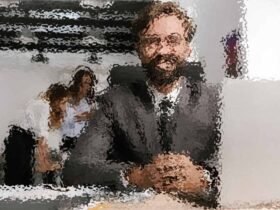
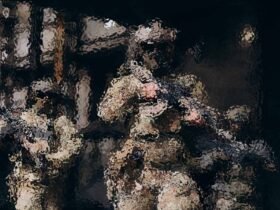
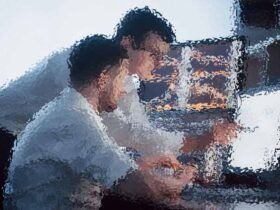
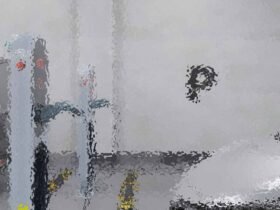


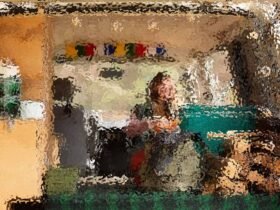
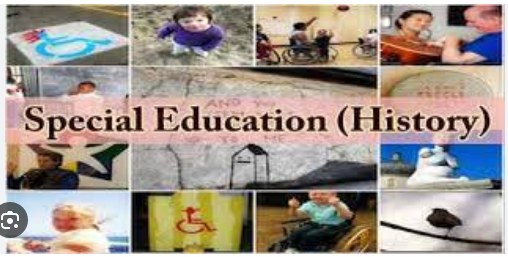
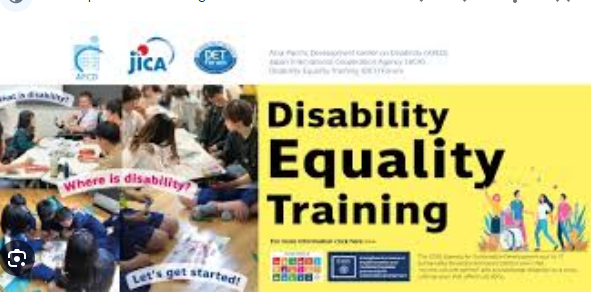



Leave a Reply